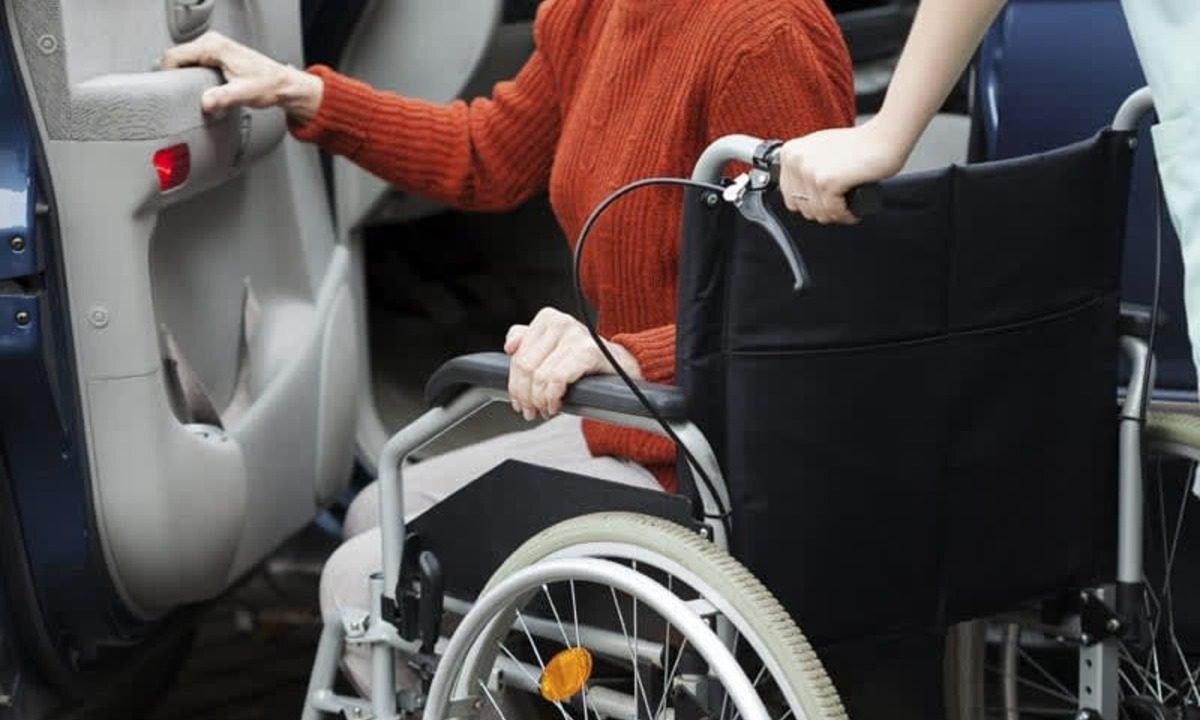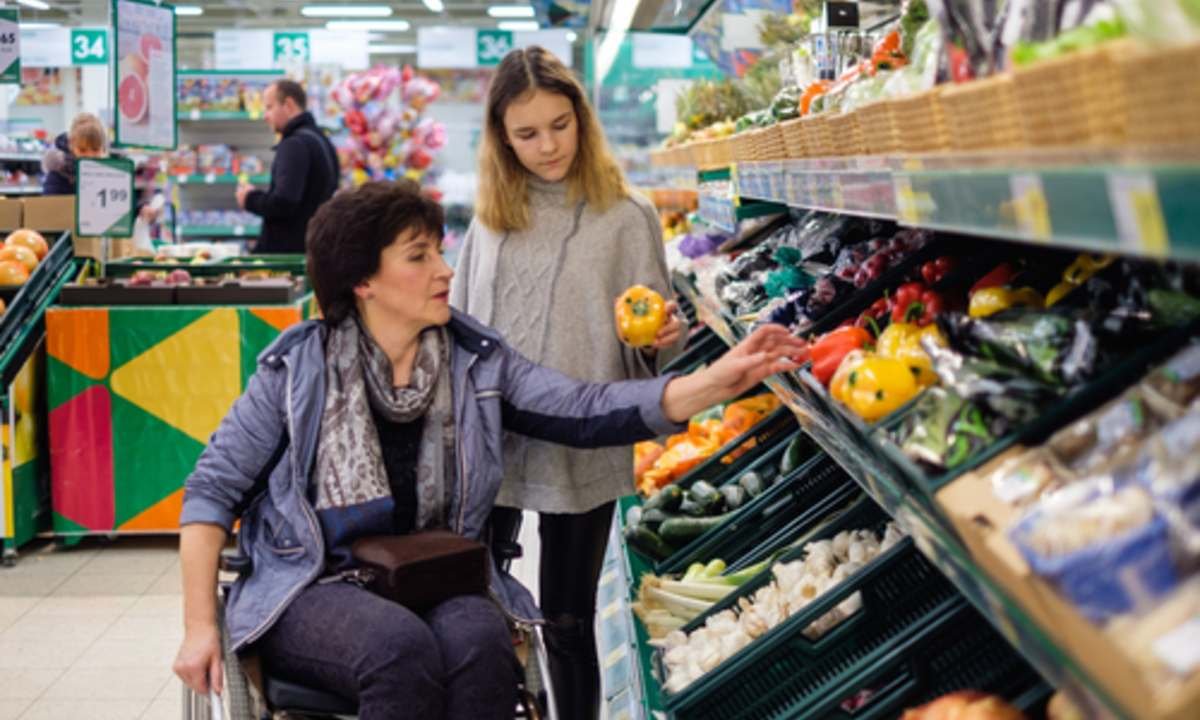In an increasingly interconnected world, accessibility and inclusivity have become key focuses for societies striving to ensure that every individual can fully participate in all aspects of life. For people with mobility challenges, such as those who use wheelchairs, tasks like grocery shopping can present significant hurdles. However, advancements in transportation and technology have given rise to innovative solutions that address this issue. One such solution is the concept of grocery and shopping assistance through wheelchair transportation, which we will learn in this article of QRST Wheelchair Transportation, which aims to empower individuals with disabilities to navigate the world of shopping with ease and independence.
The Challenges of Grocery Shopping for Wheelchair Users
Grocery shopping is a routine task for many, but for individuals who use wheelchairs, it can pose a range of challenges. Navigating narrow aisles, reaching items on high shelves, and transporting heavy groceries are just a few of the obstacles that wheelchair users encounter. Traditional shopping experiences often require reliance on the assistance of others, leading to a loss of autonomy and a potential decrease in self-esteem.
Moreover, transportation to and from grocery stores can also be a significant hurdle. Public transportation systems in many cities may not be fully accessible, and private vehicles may not be equipped to accommodate wheelchairs. This lack of accessible transportation options can limit the ability of wheelchair users to access essential goods and services independently.
For many people, grocery shopping is a routine and often mundane task. However, for individuals who rely on wheelchairs for mobility, this seemingly simple activity can quickly turn into a complex and challenging endeavor. The physical, psychological, and logistical obstacles faced by wheelchair users during grocery shopping highlight the pressing need for innovative solutions that enhance their independence and overall quality of life.
Physical Obstacles and Accessibility Concerns

One of the most apparent challenges that wheelchair users encounter during grocery shopping is the physical layout of stores. Many grocery stores are designed with narrow aisles, cluttered displays, and high shelves, which can create insurmountable barriers for individuals in wheelchairs. Maneuvering through these tight spaces becomes an arduous task, often requiring assistance or even causing damage to store merchandise. The frustration and physical strain associated with navigating such spaces can leave wheelchair users feeling excluded and discouraged from engaging in these essential activities.
Moreover, inadequate or non-existent ramps, elevators, and accessible entrances further compound the accessibility issues. The lack of curb cuts, automatic doors, and proper aisle widths can make entering and moving within stores extremely challenging, if not impossible. This not only restricts wheelchair users’ ability to shop independently but also sends a clear message of exclusion and disregard for their needs.
Reaching and Selecting Items
Another significant hurdle faced by wheelchair users is the difficulty of reaching and selecting items on shelves. Most grocery stores arrange products on shelves that are often positioned at a height that is unreachable for individuals seated in wheelchairs. This means that many essential items are effectively off-limits to them, requiring assistance from store staff or fellow shoppers. This dependency not only erodes personal autonomy but also hampers the shopping experience, making it less efficient and more time-consuming.
The inability to access items independently also raises concerns about privacy and choice. Wheelchair users may find themselves relying on others to select items on their behalf, which can lead to a lack of control over their shopping preferences and dietary needs. This limitation can be particularly frustrating in instances where individuals have specific dietary restrictions or preferences that they are unable to communicate effectively.
Transporting and Loading Groceries
Even after successfully navigating the store and selecting items, the challenges for wheelchair users do not end at the checkout counter. Transporting and loading groceries into a vehicle or public transportation can be a significant hurdle. Traditional shopping carts are designed for able-bodied individuals, making them unsuitable for individuals seated in wheelchairs. Carrying bags on one’s lap or balancing them on the handles of the wheelchair can be both uncomfortable and unsafe.
In the absence of accessible transportation options, the journey home with groceries can become a logistical nightmare. Public transportation systems may lack the necessary accommodations, such as securement points for wheelchairs or designated spaces for groceries. Private vehicles might not have the modifications required to load groceries efficiently or safely. As a result, individuals may be forced to make difficult choices between limited transportation options and the quantity of groceries they can carry.
Psychological and Social Impacts
The challenges faced by wheelchair users during grocery shopping extend beyond the physical realm and have psychological and social implications. Constantly encountering inaccessible spaces and relying on others for assistance can lead to feelings of frustration, isolation, and even embarrassment. These negative emotions can erode self-esteem and contribute to a sense of exclusion from mainstream activities that others often take for granted.
The psychological impact of such challenges can also extend to interpersonal relationships. Many wheelchair users report feeling like a burden when they require assistance from family members, friends, or even strangers for tasks as basic as grocery shopping. This dynamic can strain relationships and create emotional distress, perpetuating the cycle of dependency and exclusion.
The Rise of Accessible Transportation Services

The advent of accessible transportation services has transformed the way individuals with disabilities can access their communities. Wheelchair-accessible vehicles and transportation platforms have become increasingly available, providing a means for people with mobility challenges to travel conveniently and comfortably. Ride-sharing services, such as Uber and Lyft, have introduced options for wheelchair-accessible vehicles, offering a new level of mobility and freedom.
In recent years, specialized services that cater specifically to individuals with disabilities have emerged. These services focus on providing transportation solutions that not only accommodate wheelchairs but also offer personalized assistance and support during the shopping process. This intersection of transportation and shopping assistance has opened doors to a world of possibilities for wheelchair users, enabling them to regain control over their shopping experiences.
Integrated Solutions: Grocery and Shopping Assistance
One of the innovative solutions to address the challenges faced by wheelchair users during grocery shopping is the integration of transportation and shopping assistance. This approach seeks to create a seamless experience that encompasses not only the journey to and from the store but also the entire shopping process.
Companies and organizations have started to offer comprehensive services that combine accessible transportation with shopping assistance. A wheelchair user can now book a ride that includes a trained assistant who accompanies them to the store, helps them navigate the aisles, reach items, and even load groceries into the vehicle. This integrated approach not only enhances accessibility but also fosters a sense of empowerment and independence for individuals who may have felt limited in their shopping capabilities.
Technology as a Catalyst
The success of grocery and shopping assistance through wheelchair transportation can be attributed in part to technological advancements. Mobile applications and online platforms have become essential tools for connecting service providers with users. These platforms allow users to book rides, schedule shopping assistance, and communicate preferences with ease. They also enable real-time tracking of transportation and provide a means for users to provide feedback, ensuring a continuous cycle of improvement.
Furthermore, technology has also facilitated communication between service providers and individuals with disabilities, allowing for personalized assistance. For example, users can communicate their specific needs, preferences, and dietary restrictions in advance, enabling the assistant to prepare for a productive shopping experience. This level of customization enhances the overall satisfaction of users and contributes to the success of the integrated approach.
Benefits for Individuals and Society
The implementation of grocery and shopping assistance through wheelchair transportation brings forth numerous benefits, both on an individual level and for society as a whole.
For individuals with disabilities, this approach restores a sense of agency and independence. The ability to shop for groceries without relying on others instills a sense of self-worth and autonomy that can positively impact overall well-being. Additionally, the integrated assistance provided by trained personnel ensures a smooth shopping experience, reducing stress and anxiety associated with navigating crowded stores and unfamiliar environments.
On a societal level, the integration of accessible transportation and shopping assistance aligns with the principles of inclusivity and equal opportunity. When individuals with disabilities can fully participate in activities that were previously challenging, they contribute to the vibrancy and diversity of their communities. Moreover, the demand for these services drives innovation and economic growth, creating new job opportunities in the field of disability support services.
Challenges and Future Directions
While grocery and shopping assistance through wheelchair transportation has made significant strides, challenges still exist that need to be addressed for the continued success of these services.
First, ensuring affordability remains crucial. Accessible transportation and integrated assistance services must be financially accessible to a broad range of individuals with disabilities. Government initiatives and partnerships with private sectors could help mitigate the financial burden on users and service providers.
Second, expanding the availability of these services to rural and remote areas is essential. While urban centers often have better accessibility options, individuals living in less densely populated areas should not be excluded from the benefits of integrated shopping assistance. Creative solutions, such as mobile grocery units or partnerships with local businesses, could help bridge this gap.
Conclusion
Grocery and shopping assistance through wheelchair transportation exemplifies the power of innovation to transform lives and promote inclusivity. By combining accessible transportation with personalized assistance, this approach empowers individuals with disabilities to reclaim their independence and participate fully in their communities. Technological advancements have played a pivotal role in making this concept a reality, connecting users with service providers and facilitating a seamless experience.
As society continues to recognize the importance of inclusivity and equal opportunity, it is crucial to support and expand initiatives that promote accessibility. By addressing challenges, fostering partnerships, and embracing innovation, we can ensure that every individual, regardless of their mobility challenges, can navigate the world of shopping with confidence, autonomy, and dignity.
FAQS
1. Why is grocery shopping challenging for wheelchair users? Navigating narrow store aisles, reaching items on high shelves, and inadequate ramps can create physical barriers, making it difficult for wheelchair users to move around and access products.
2. How do wheelchair users cope with selecting items on high shelves? Wheelchair users often rely on assistance from store staff or other shoppers to reach and select items located on shelves that are out of their reach.
3. What are the challenges of transporting groceries for wheelchair users? Transporting groceries in a wheelchair or traditional shopping cart can be cumbersome and unsafe. Accessible transportation options may be limited, posing difficulties in getting groceries home.
4. How do these challenges impact wheelchair users psychologically? Constantly facing inaccessible spaces and dependency on others can lead to feelings of frustration, isolation, and reduced self-esteem, impacting both mental well-being and interpersonal relationships.
5. What solutions are emerging to address these challenges? Integrated services that combine accessible transportation with personalized shopping assistance are emerging, empowering wheelchair users to shop independently and enhancing their overall shopping experience.
